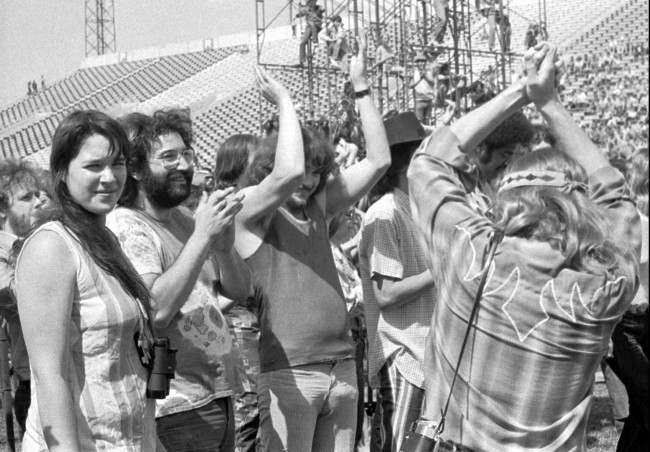
Guitarist Jerry Garcia, of the band “The Grateful Dead,” second from left, is joined by his first wife Mountain Girl, left, Delaney Bramlett, centre, and Bruce Baxter III, right, in Calgary, Alberta, Canada, on July 2, 1970, during the legendary “Festival Express,” also known as the Transcontinental Pop Festival. (AP Photo/Ron “Sunshine” Mastrion)
GRATEFUL Dead fans for whom Jerry Garcia is more than an ice-cream pun can head over to JerryGarcia.com and tune in to the music of the 26 bands he played with. Best of all, you can see all the Dead’s shows archived. (They played over 2,300 shows.) If that’s not enough, you can check out Grateful Dead Archive Online from the University of California, Santa Cruz. And then take a look at the Internet Archive’s Grateful Dead collection.
If you don’t know the Dead’s work, listen to their first album. It is a country-rock classic.
Before you head over, here’s Jerry Garcia explaining how they got so big. Well, at least how he thinks they achieved greatness after they stopped being The Warlocks in 1965, “playing the divorcees bars up and down the peninsula.” As their promoter Bill Graham put it: “They’re not the best at what they do. They’re the only ones that do what they do.”
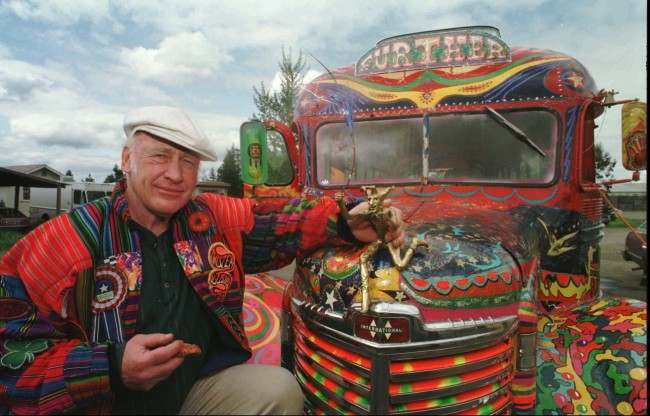
Author Ken Kesey poses with the magic bus Further, a descendant of the vehicle that carried him and the Merry Pranksters on the 1964 trip immortalized in the Tom Wolfe book, “The Electric Kool-Aid Acid Test.” Kesey is taking the bus to the Rock and Roll Hall of Fame and Museum for an exhibit on the psychedelic 1960s.
The great minds at Blank-on-Blank have animated his 1988 interview with former Capital-EMI record executive Joe Smith, who was there when the Dead singed in 1967. Listen as Jerry recalls his meeting with the Merry Pranksters and taking part in Ken Kesey’s acid test parties in La Honda, California.
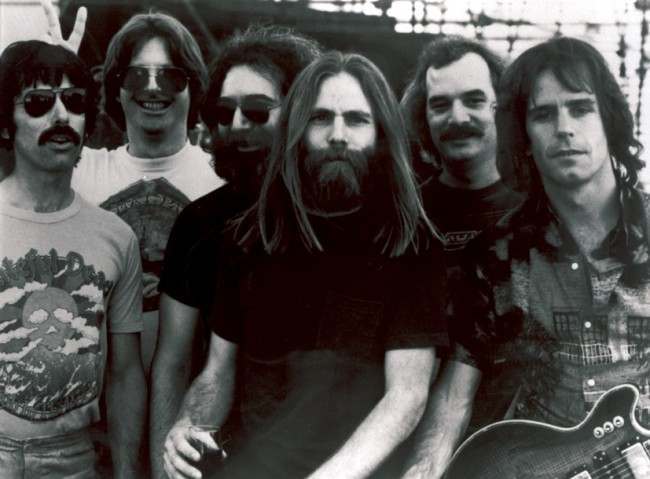
Members of the Grateful Dead,L-R, Mickey Hart, Phil Lesh, Jerry Garcia, Brent Mydland, Bill Kreutzmann, and Bob Weir. Grateful Dead drummer Mickey Hart says he and other members of the band never really understood the forces that turned them into a 30-year cultural phenomenon. “It was an alchemical thing,” Hart said. “It’s for other people to decide our fate in history, our place in the culture.” That is exactly why fans, followers and some of those who were in the inner circle of the Grateful Dead plan to travel to the University of Massachusetts for three days in November. This is no music festival. (AP Photo/File)
Date: 04/06/2006
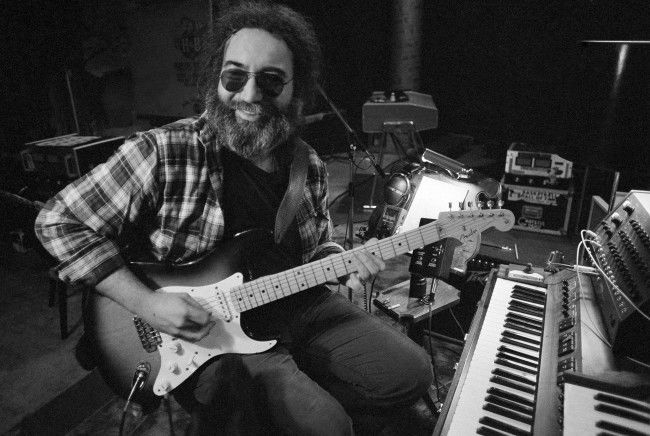
Jerry Garcia, leader of the legendary group The Grateful Dead, works with his guitar on May 8, 1979. At the time of the Woodstock Festival, many group had an uncertain future. “Musically, it was a total disaster for us,” Garcia said of Woodstock in a interview. “I remember people standing in back of us yelling the stage is falling down, plus it was wet for so long and we had all that electronic equipment.” (AP Photo)

The American rock band “The Grateful Dead” winds up three nights of concerts on a stage in front of the fabled “Sphinx” in Cairo, Egypt, Sept. 17, 1978.
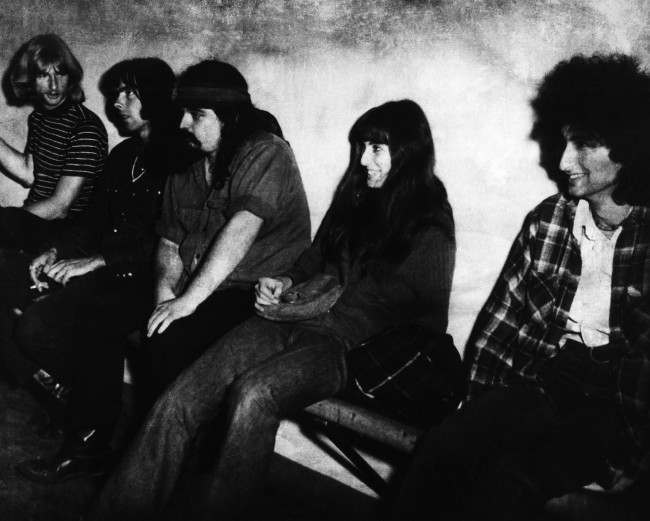
Three members of the rock singing group, The Grateful Dead, were jailed, on Oct. 3, 1967, in San Francisco after a raid on their Hippieville headquarters by state narcotics agents. They were booked with two of their managers and five girl friends on suspicion of possessing narcotics. Rod McKernan, 22, is third from left. Danny Rifkin, 24, at right, is one of their managers. Others refused to identify themselves. (AP Photo)
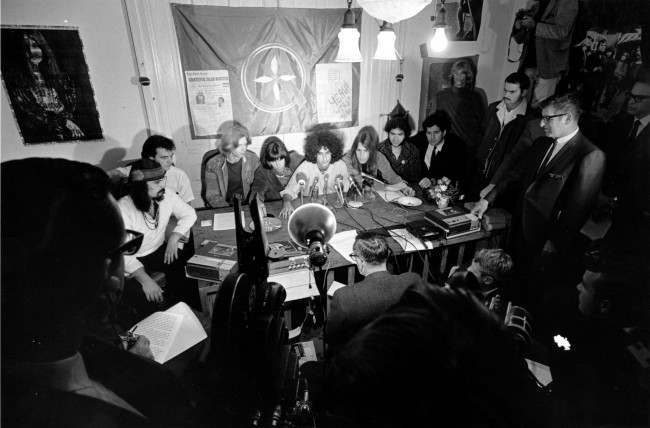
Would you like to support Flashbak?
Please consider making a donation to our site. We don't want to rely on ads to bring you the best of visual culture. You can also support us by signing up to our Mailing List. And you can also follow us on Facebook, Instagram and Twitter. For great art and culture delivered to your door, visit our shop.

